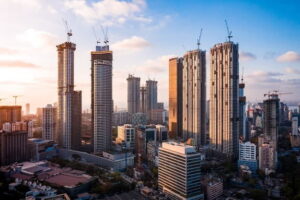Why Do You Need a Secure Payment System?
Online transactions are common these days and it is seen in all e-commerce. Even if the online booking system has the best interface, having an unsafe payment system is a threat to the customers and they leave the website. The payment gateway for any hotel booking system should place trust in the visitors while they book.
For any hotel booking system, the website verifies their customer’s identity, has a check on fraudulent bookings. It ensures security and compliance in the following way:
– Fraud Prevention – The validation system saves any hotel from any fraud. It makes use of machine learning, security protocols, and rate rules. The payment software ensures secure payment by using advanced algorithms to differentiate fraudulent transactions from the actual ones. Having such secured transactions ensures every hotel’s revenue is protected.
– 2 Factor Authentication & User Account – The payment system ensures secure payment by using 2 Factor Authentication and Single c Sign On. This system permits customers to log in with their phone numbers and go through the booking process with a simple step and have a password-free experience.
The payment systems provide a 100% secure flow of transactions with the following features:
– Payment Validation – The payment system provides secure payment by verifying the validity of all credit cards along with the amount. It also checks mobile wallets validity if the payment is made through mobile wallets before it passes to the hotel’s central reservation system.
– Payment Card Industry Data Security Standard (PCI DSS) – To ensure more secure payment for customers, hotel reservation system uses, and outstanding check on data. It uses PayFac to vault and check each customer’s credit card details, provides secure tokens, and then confirms payment in the checkout. The payment technology is designed in such a way to support hotels to adhere with the Payment Card Industry Data Security Standard (PCI DSS).
– 3D Secure 2.0 – Fetching credit card details is the most sensitive part of online payments. To reduce any kind of fraud with credit card details, 3D Secure 2.0 ensures that the customers go through an additional card authentication step. This step makes the customer to do some operations directly on the bank’s website associated with their credit card. This extra step ensures to reduce any kind of fraud and promotes safe transactions. This process is called 3D Secure and is a part of the European requirement done for the sake of Strong Customer Authentication.
– Payment Services Directive (PSD2) – The authentication requirements of 3D Secure 2.0 are to ensure that the payments are validated as per the European Union’s second Payment Services Directive (PSD2). This extra layer of authentication provides the hotel with a safer transaction and be confident that they will not lose their revenue with any fraudulent activities.
– GDPR – The hotel reservation system ensures to have secure payment and is compliant with GDPR requirements. This compliance ensures secure customer data collection and even store the data in a secure place. With these regulations, hotels will uphold customers’ right to request for data to be updated, deleted, or even download.
– ADA – The hotel reservation system ensures the payment technology be fully accessible to every one and be compliant with all the legal standards of the Americans with Disabilities Act. To become completely accessible, the payment system keeps an audit of the technology regularly. This audit ensures that the payment system abides with the ADA’s standard.
It is essential to follow safety practices for all online payment systems. Various safety practices are:
1) Payment Card Industry (PCI) Compliance – This safety practice is the most important to be considered. If PCI compliance protocols are missed, it will land in legal trouble. PCI helps to set standard security for online payments.
2) Secure Socket Layer (SSL) Protocol – SSL is an internet security encryption protocol and it tells that a website is safe for transactions.
3) Tokenization – Tokenization is another safety protocol, where there is an extra security layer to protect payment data. Tokenization takes place when a program converts the payment data into random numbers.
4) 3D Secure – 3D Secure is a safety protocol where it includes an extra authentication layer during the payment process. It checks with the bank.





